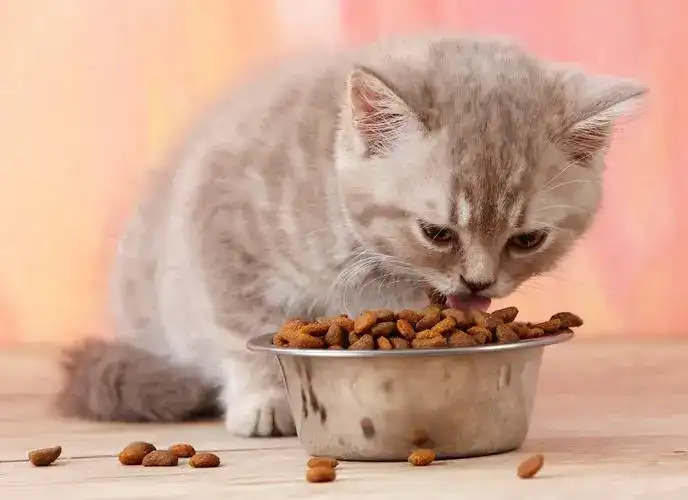Selecting the right cat food brand is one of the most crucial decisions you’ll make as a cat owner. A balanced diet is essential for your cat’s overall health, energy levels, and longevity. With so many options available, it can be overwhelming to navigate the choices. This article will guide you through the process of choosing the best cat food brand, ensuring your feline friend receives the nutrition they need.

1. Understanding Your Cat’s Nutritional Needs
Why Nutrition Matters for Cats
Cats are obligate carnivores, which means their bodies require a diet primarily composed of meat. Understanding their unique nutritional needs is the first step in selecting the right food.
Key Nutrients for Cats
- Protein: Essential for muscle development and energy.
- Taurine: An amino acid critical for heart and eye health.
- Fatty Acids: Omega-3 and Omega-6 fatty acids contribute to a healthy coat and skin.
- Vitamins and Minerals: Essential for overall well-being, including immune function and bone health.
2. Identifying the Right Cat Food Types
2.1. Dry Cat Food (Kibble)
Benefits and Drawbacks
Dry cat food is convenient and has a longer shelf life. It can help keep your cat’s teeth cleaner, but it may not provide enough moisture in their diet.
2.2. Wet Cat Food (Canned)
Benefits and Drawbacks
Wet cat food is higher in moisture, which is beneficial for urinary tract health. However, it may be more expensive and has a shorter shelf life once opened.
2.3. Raw and Freeze-Dried Options
Understanding Raw Diets
Some owners opt for raw or freeze-dried food, which mimics a cat’s natural diet. However, it requires careful handling and may not be suitable for all cats.
3. Evaluating Cat Food Brands
3.1. Researching Brand Reputation
Importance of Brand Integrity
Choose brands that are well-regarded in the pet community. Look for companies that have a history of quality control and safety standards.
3.2. Ingredient Sourcing
Understanding Ingredients
Investigate where the ingredients are sourced. Brands that use high-quality, whole food ingredients are often more reliable than those using fillers and by-products.
3.3. AAFCO Certification
What is AAFCO?
The Association of American Feed Control Officials (AAFCO) sets guidelines for pet food. Look for products that meet AAFCO standards for complete and balanced nutrition.
4. Reading Labels and Ingredients
4.1. Ingredient List Order
Understanding Ingredient Lists
Ingredients are listed in descending order by weight. The first few ingredients should be high-quality protein sources.
4.2. Avoiding Harmful Additives
Recognizing Fillers and Additives
Steer clear of foods with artificial colors, flavors, and preservatives. Fillers like corn and soy offer little nutritional value and can cause allergies in some cats.
4.3. Special Formulas
Dietary Needs
Consider your cat’s specific needs—whether they require weight management, grain-free options, or are prone to allergies. Look for brands that offer specialized formulas.
5. Assessing Your Cat’s Life Stage
5.1. Kitten Food
Nutritional Needs of Kittens
Kittens require food that supports their rapid growth and high energy levels. Look for kitten-specific formulas rich in protein and calories.
5.2. Adult Cat Food
Maintaining Health in Adult Cats
Adult cats need balanced nutrition to maintain a healthy weight and energy level. Ensure the food contains adequate protein and essential nutrients.
5.3. Senior Cat Food
Special Considerations for Senior Cats
Senior cats often require diets tailored to their changing metabolism and health needs. Look for formulas that support joint health and include antioxidants.
6. Testing and Transitioning to New Food
6.1. Gradual Transition
How to Introduce New Food
When switching brands, introduce the new food gradually over a week to avoid digestive upset. Start with a mix of the old and new food, gradually increasing the new food portion.
6.2. Monitoring for Allergies
Signs of Food Sensitivities
Watch for signs of allergies or intolerances, such as vomiting, diarrhea, or skin issues. If you notice any adverse reactions, consult your veterinarian.
7. Consulting with Your Veterinarian
7.1. Professional Recommendations
Importance of Veterinary Advice
Always consult your veterinarian when selecting a cat food brand, especially if your cat has specific health conditions. They can recommend brands that align with your cat’s nutritional needs.
7.2. Regular Health Check-ups
Monitoring Health Over Time
Regular vet visits will help track your cat’s health and make dietary adjustments as needed, ensuring they remain in optimal health.
Conclusion
Choosing the right cat food brand is a significant decision that impacts your cat’s health and happiness. By understanding their nutritional needs, evaluating brands, reading labels, and consulting with your veterinarian, you can ensure your feline friend receives the best possible diet. With the right food, you’ll help your cat lead a long, healthy, and happy life.

Comments (0)